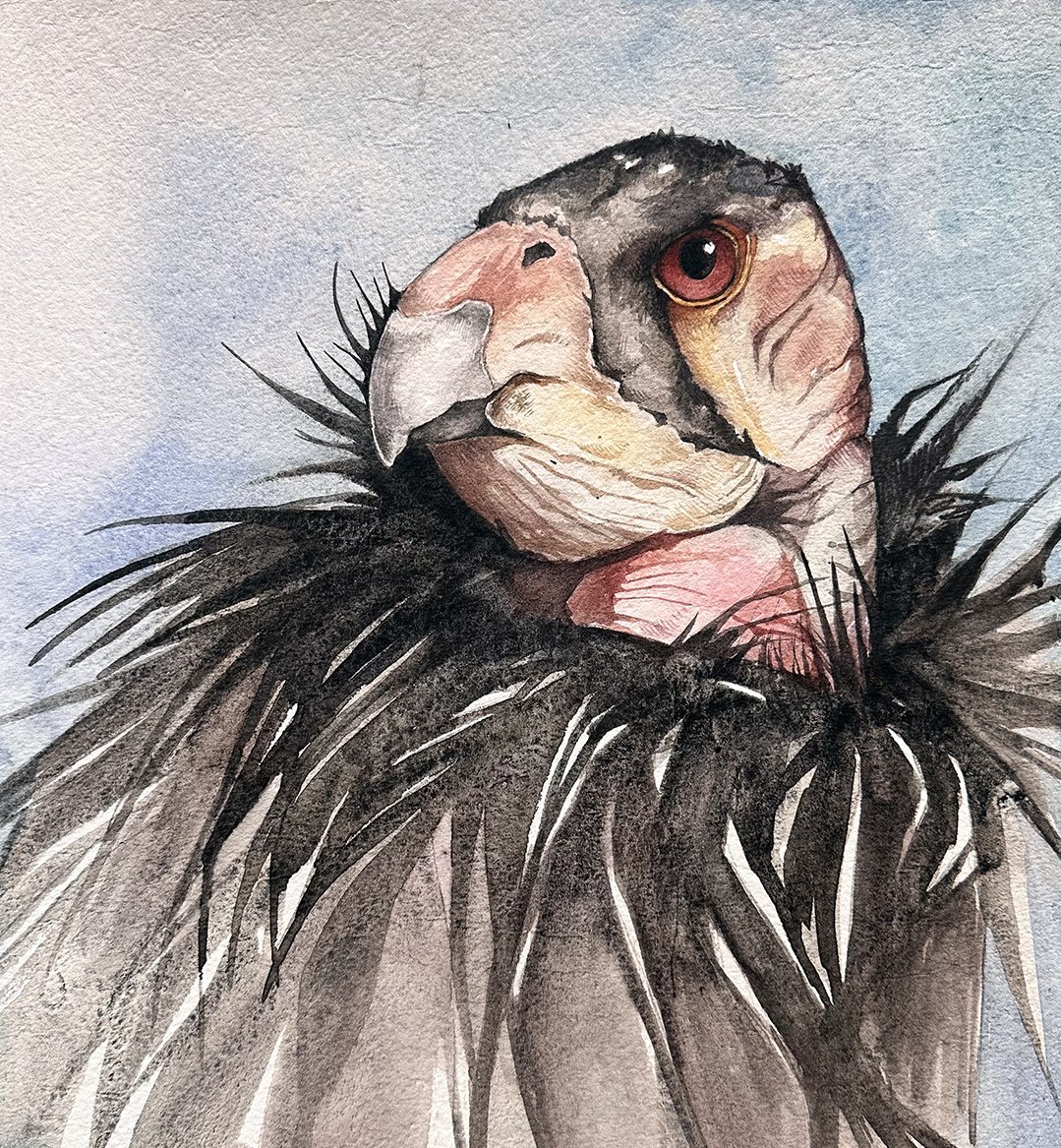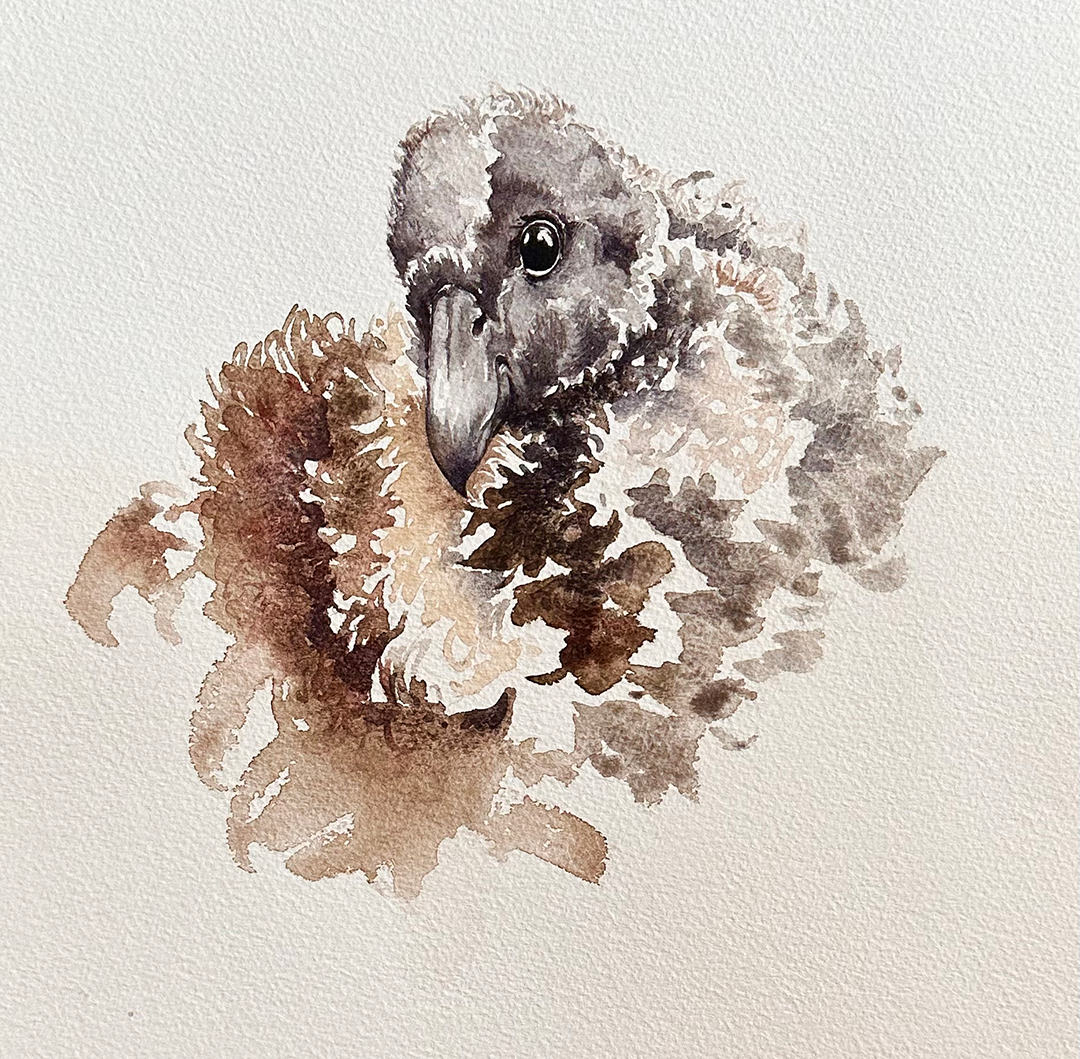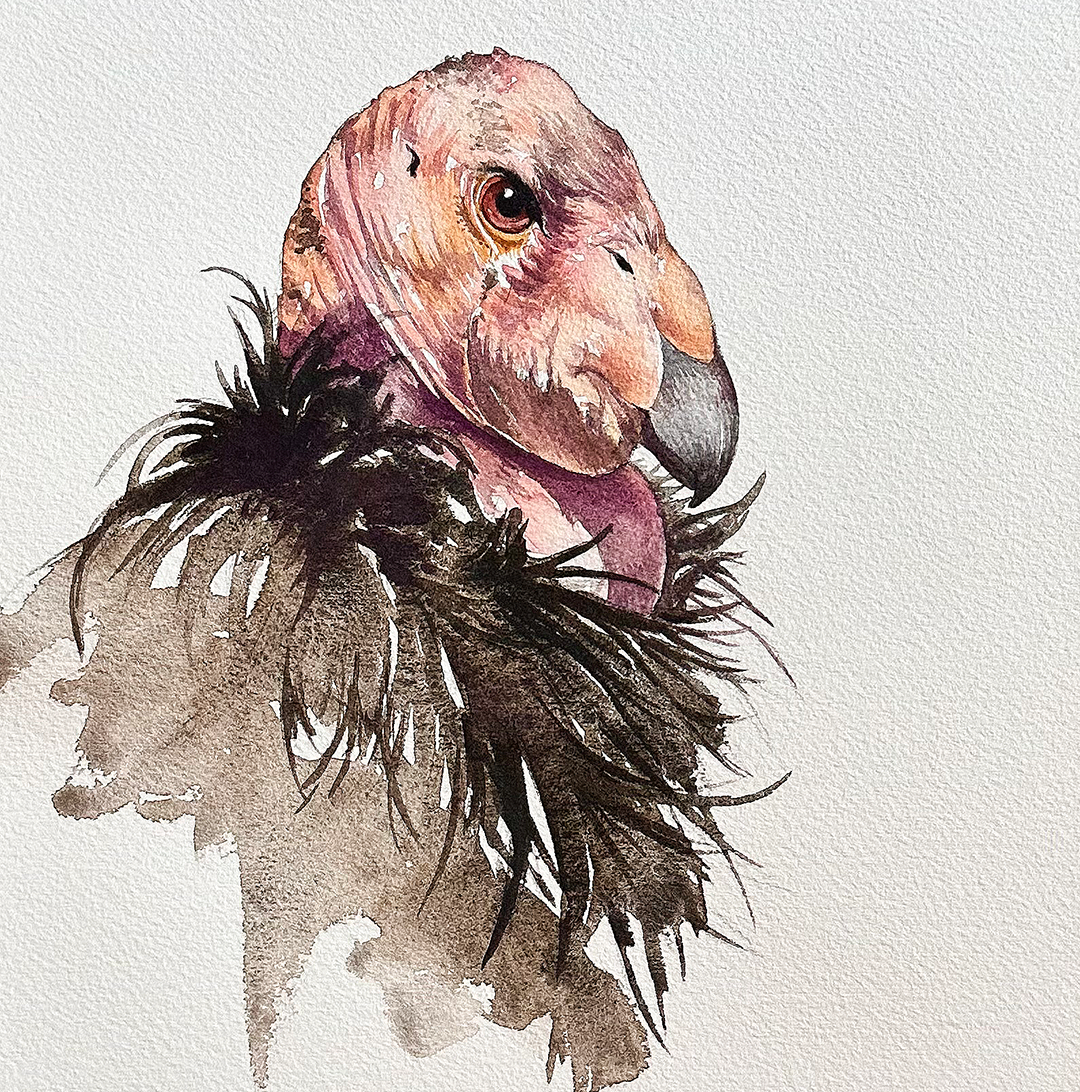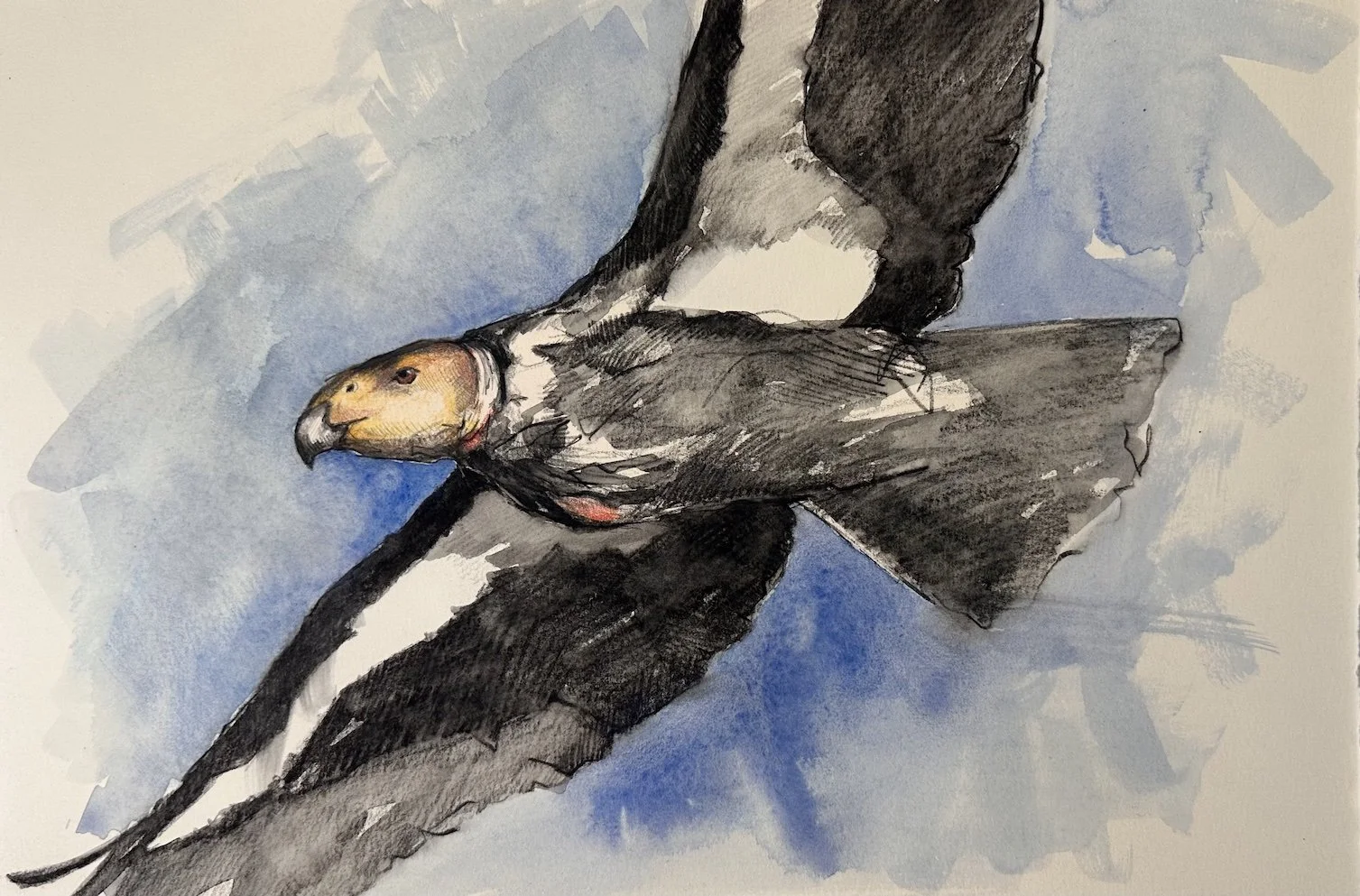California CondorS IN THE SPOTLIGHT
“Nature Conservation has always been a part of my life. I’ve also been a birder for as long as I can remember and avians are at the forefront of my art imagery. I became aware of the plight the California Condors face when I moved to California 16 years ago — and then, with the 2020 Dolan Wildfire having such a grave impact on the Big Sur Flock, I dove even deeper into understanding (and falling in love with) this critically endangered species.” - Jennifer Anderson
Why Are California CondorS Important?
A famous icon of the American West, California Condors rank as one of the world’s most endangered species. California Condors are found in California, Utah, Arizona and the Mexican state of Baja California. They are the largest species of the New World Vultures, donning mostly black feathers with very distinguishable white under-wing feathers. Their heads and necks are pretty much bare — which helps in preventing meat and bacteria from collecting as they feed on carcasses.
As scavengers, these large birds depend on the carrion of mostly large animals, feeding in community groups which have a distinguished social structure. The California Condors in the Big Sur flock not only eat land mammals, but are also known to scavenge on the coastal beaches, eating dead sea animals such as seals, sea lions, and whales. Scavengers are critical to the world’s ecosystems, and the California Condors act as vital members of this ‘clean-up crew’, feasting on carrion found on farmlands, ranch landscapes and coastal regions. If not cleaned up, carrion are vectors for diseases that can transmit to wildlife, livestock and humans.
California Condors have played an important role in the spiritual realm for Native Americans, appearing in sacred lore and origin stories. The feathers and songs of the condors are also important components of ancient ceremonies. In Northern California the Yurok Tribe has launched a conservation effort to help save this magnificent species.
With their large wingspans, California Condors are made for soaring. Soaring helps the Condors cover vast areas in search for food. It is typical to see them taking advantage of thermals and coastal currents, oftentimes flying with other members of their social group. Being very social, they are known to perch together as well as eat together.
California Condors are known to mate for life, and reach breeding age between 6 and 8 years old. Just one egg is laid and (hopefully!) hatched by a pair every two years. Both parents share in raising their chick — taking turns feeding and keeping it warm. The chick can take flight around 7 months old, but is often not fully independent for a full year.
Even with the California Condors having committed parents raising their broods and strong social structures, the slow reproductive rate makes the recovery of this species very challenging.
what are the challenges facing California CondorS
California Condors face many threats in today’s world, with poisoning from lead bullets being the most prevalent. Condors are subject to lead poisoning because they consume lead ammunition found in the carcasses they eat.
Due to the remarkably low numbers of this endangered species, they have a very limited genetic pool, and studies have shown that the California Condors are therefore very susceptible to infectious diseases. This will likely have an impact on how the species can repopulate.
While wildfires pose a threat to the habitat of California Condors, the birds are especially at risk if a wildfire sweeps through their habitat during the night when the birds are unlikely to take flight and find safety.
Microtrash is an additional mortality factor, especially in the nestlings. Microtrash consists of bottle caps, plastic fragments, broken glass, spent ammunition, etc., and the ingestion of these causes major issues in the digestive tract and often leads to death, especially in nestlings.
Rodenticides have been found in many deceased California Condors. Rodenticides that are composed of anticoagulants are used widely for pest control. But the poison does not break down easily after the target pests die, and therefore can remain in the food chain, especially for scavengers. In one study, these 2nd generation rodenticides were found in 42% of deceased California Condors.
Electrocution from power lines and ocean contaminants are all further problems the California Condors encounter. Since the California Condors spend much of their time soaring at great heights, flying into electrical wires is a real danger they face. And, unfortunately, pollutants in the ocean can also reach the California Condors which feed on marine carcasses. Despite being banned, DDT and PCBs are still found in ocean waters and marine life, which eventually finds its way to the clean-up crew of the California Condors.
what can WE do to help?
STUDY California CondorS
Learn more about this important species — by learning and reading about this species we can understand its plight and support conservation work for the California Condor.
The Ventana Wildlife Society is a conservation and education group based in California. It successfully restored a population of Bald Eagles to the wilds of California and is currently dedicated to the restoration of the California Condor. Learn all about the biology and conservation efforts for these magnificent creatures by watching some terrific short documentaries produced by the Ventana Wildlife Society.
The Peregrine Fund in Idaho is another conservation group that has a plethora of information to share. It also has captive breeding facilities and is currently home to approximately 57 California Condors.
celebrate California CondorS
We can all celebrate this beautiful species by taking part in conservation efforts and supporting the teams that specifically work with California Condors. Adopt-a-Condor through the Ventana Wildlife Society!
California Condors have been brought back to the wilds of California, but their numbers are still quite small and the flocks still need our help. A symbolic adoption helps to fund the ongoing research and support of these majestic creatures.
Create your own art about these majestic creatures and share on social media! Read Native American lore and be inspired to write your own stories and poems.
protect California CondorS
Find alternatives to pesticides, rodenticides and other poisons, and lead bullets. As a scavenging creature, the food chain ends with them – so any poisons in the food chain eventually reach the food of these glorious creatures.
Be a steward of the environment! We all know Reduce, Reuse and Recycle – put this into action in your daily life. The better we care for our environment, the greater the chances the California Condor has for restoration. Protect the wild places you love, don’t litter and please help and remove trash when you see it.
There are now programs in place for hunters to obtain lead-free ammunition (although it is unclear if this is making a big difference yet). More info can be found here: https://www.ventanaws.org/ammunition.html
See also our resource page on Vulture Conservation.
